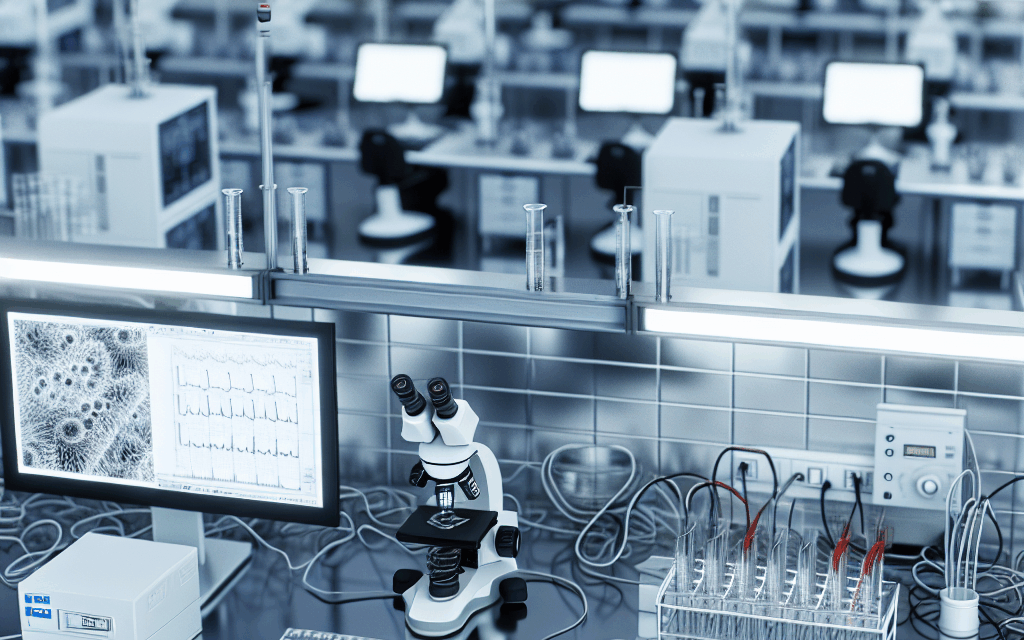Summary
Poor integration of middleware in clinical labs can disrupt workflow, affecting lab turnaround time and technician workload. Understanding the impact of middleware when not adequately integrated with Laboratory Information Systems (LIS) or analyzers is crucial. This article discusses essential features that aid or challenge technicians and highlights how recent upgrades can enhance lab efficiency.
Key Takeaways
- Middleware integration is essential for efficient clinical laboratory operations.
- Poorly integrated systems can lead to increased technician workload and delays.
- Essential middleware features include interoperability, real-time data processing, and user-friendly interfaces.
- Recent upgrades in middleware technology can enhance lab efficiency significantly.
The reliance on middleware in clinical laboratories is undeniable. These systems act as crucial intermediaries, ensuring seamless data transfer and communication between Laboratory Information Systems (LIS) and analyzers. However, not all middleware implementations run smoothly. Poor integration can lead to workflow disruptions, affecting turnaround times and increasing workloads for laboratory technicians.
Clinical laboratories demand precision and efficiency. Any delay in data transmission between instruments and the LIS can slow down diagnosis and decision-making processes. Middleware that fails to integrate well causes bottlenecks, forcing technicians to manually intervene, which is both time-consuming and prone to errors. Furthermore, if the middleware is not well-aligned with the specific needs of the lab, technicians may face unnecessary hurdles, impeding their daily responsibilities.
Understanding the impact of poorly integrated middleware on daily operations emphasizes the need for systems that provide real-time data processing, straightforward interoperability, and intuitive user interfaces. Features that cater to these aspects can empower lab staff by minimizing manual data handling and reducing error rates.
Integration Features and Upgrades in Middleware
Advancements in middleware technologies provide laboratories with solutions to common integration problems. Current upgrades focus on enhancing interoperability, allowing various systems and analyzers to communicate fluidly without requiring extensive manual interventions from technicians. Laboratories benefit significantly from middleware that supports versatile data formats and communication standards, ensuring reliable and accurate data flow.
Real-time data processing is another vital feature. Middleware capable of processing and displaying data quickly allows labs to maintain swift workflows, minimizing the potential for backlogs. This feature, alongside alert systems, enables immediate action on critical results, further enhancing lab efficiency.
User-friendly interfaces also play a substantial role in day-to-day operations. Middleware that is easy for technicians to navigate can decrease training times and reduce the likelihood of user errors. When systems are intuitive, lab professionals can focus on essential tasks, optimizing their workflow and improving overall productivity.
Notably, recent upgrades have introduced self-learning capabilities and automation features. These improvements help in anticipating potential issues and relieving technicians from mundane tasks, allowing them to dedicate more time to complex and critical analyses. Such features align closely with the overarching goal of maximizing lab efficiency while ensuring accuracy.
In conclusion, middleware’s role in clinical labs is pivotal to achieving operational excellence. However, this is only feasible with proper integration into existing systems. By understanding the critical features that support efficient lab operations and leveraging recent technological enhancements, labs can improve turnaround times and ease technician workload, fostering a more productive and reliable testing environment.


